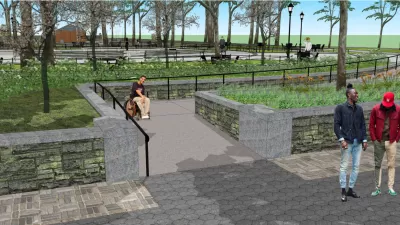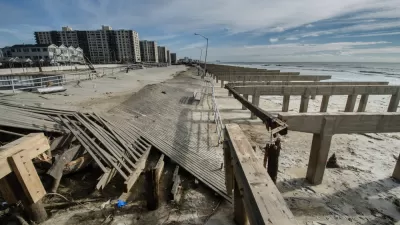It sounds like the plot out of a bad B movie, but to the families of those killed and injured by falling limbs and branches from trees in New York's parks and public spaces, it's a real-life horror story that raises questions of municipal liability.
In a three-part series appearing in The New York Times, William Glaberson and Lisa W. Foderaro examine "deaths and injuries caused by falling trees in New York City,
and a haphazard, financially strapped system of tree care and
inspections."
Over the last decade, at least ten lawsuits have been brought against New York City for deaths and injuries caused by falling limbs and branches. As the authors note, amidst a local and national backdrop of steep cutbacks in funding for tree care and safety, "The city has paid millions of dollars in damage
claims, with far more expected."
"Lawyers and investigators hired by the victims have gathered parks
records, taken sworn testimony from city officials and parks workers,
and hired tree-care experts to review city procedures. The collected
evidence, taken together with public records and interviews with outside
experts and parks officials, depicts an overstretched and haphazard
system of tree inspections and care, one in which the crucial job of
spotting dangers can be left to untrained workers, and repairs and
pruning are delayed to save money."
"At the center of many of the cases is a simple question: how much
responsibility does the city have for protecting people who pass beneath
its graceful elms, oaks and maples?"
FULL STORY: Neglected, Rotting Trees Turn Deadly

Planetizen Federal Action Tracker
A weekly monitor of how Trump’s orders and actions are impacting planners and planning in America.

Maui's Vacation Rental Debate Turns Ugly
Verbal attacks, misinformation campaigns and fistfights plague a high-stakes debate to convert thousands of vacation rentals into long-term housing.

Restaurant Patios Were a Pandemic Win — Why Were They so Hard to Keep?
Social distancing requirements and changes in travel patterns prompted cities to pilot new uses for street and sidewalk space. Then it got complicated.

In California Battle of Housing vs. Environment, Housing Just Won
A new state law significantly limits the power of CEQA, an environmental review law that served as a powerful tool for blocking new development.

Boulder Eliminates Parking Minimums Citywide
Officials estimate the cost of building a single underground parking space at up to $100,000.

Orange County, Florida Adopts Largest US “Sprawl Repair” Code
The ‘Orange Code’ seeks to rectify decades of sprawl-inducing, car-oriented development.
Urban Design for Planners 1: Software Tools
This six-course series explores essential urban design concepts using open source software and equips planners with the tools they need to participate fully in the urban design process.
Planning for Universal Design
Learn the tools for implementing Universal Design in planning regulations.
Heyer Gruel & Associates PA
JM Goldson LLC
Custer County Colorado
City of Camden Redevelopment Agency
City of Astoria
Transportation Research & Education Center (TREC) at Portland State University
Jefferson Parish Government
Camden Redevelopment Agency
City of Claremont




























